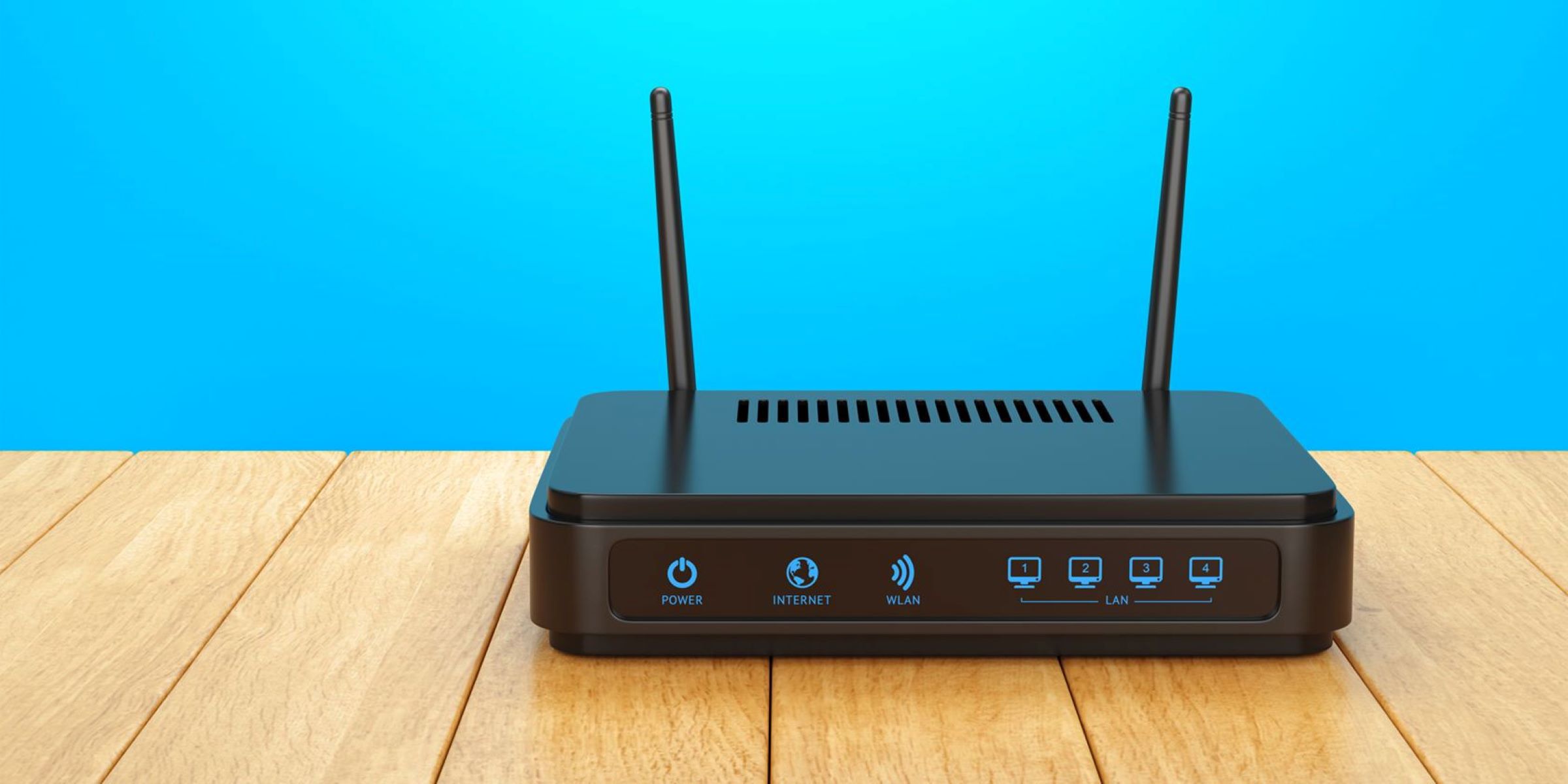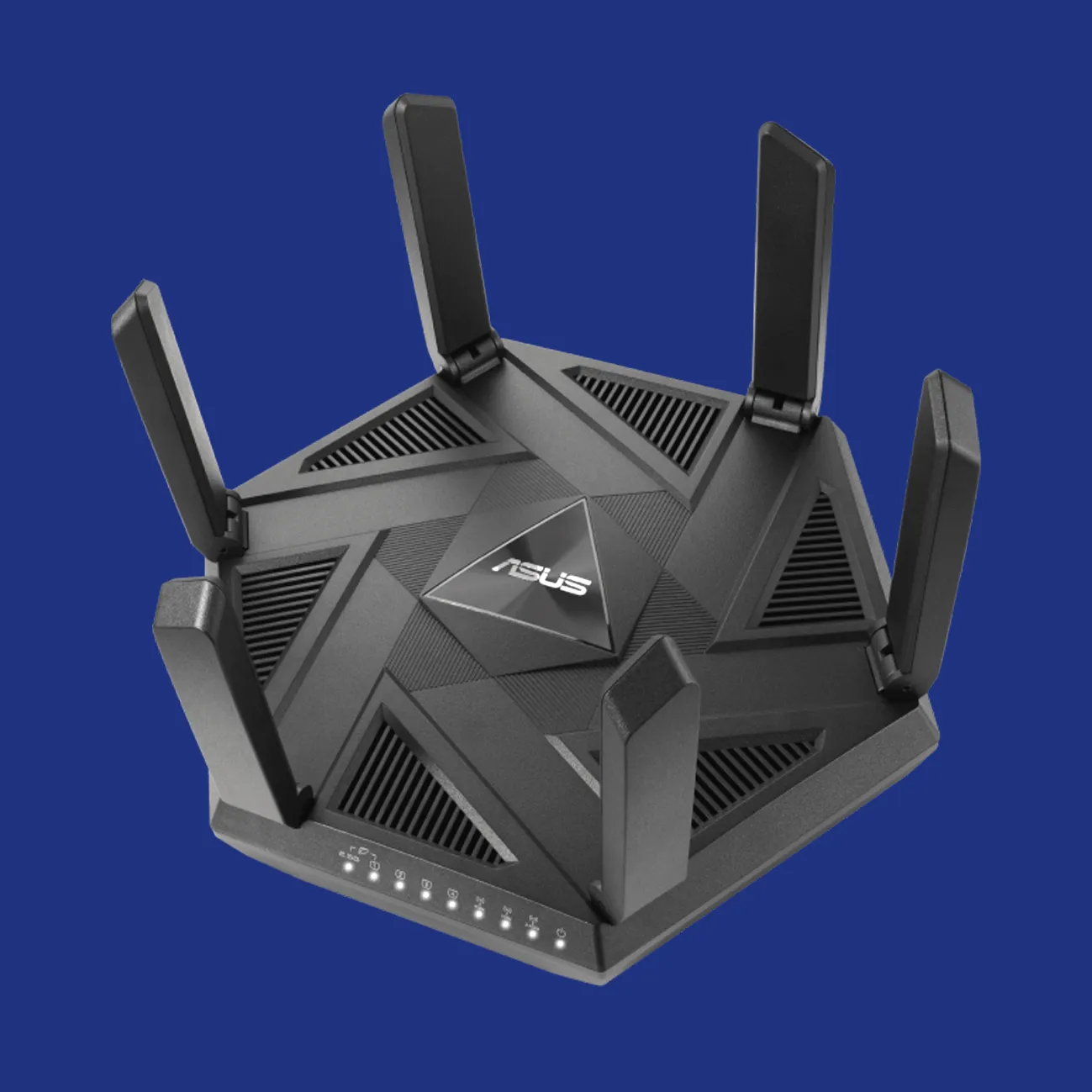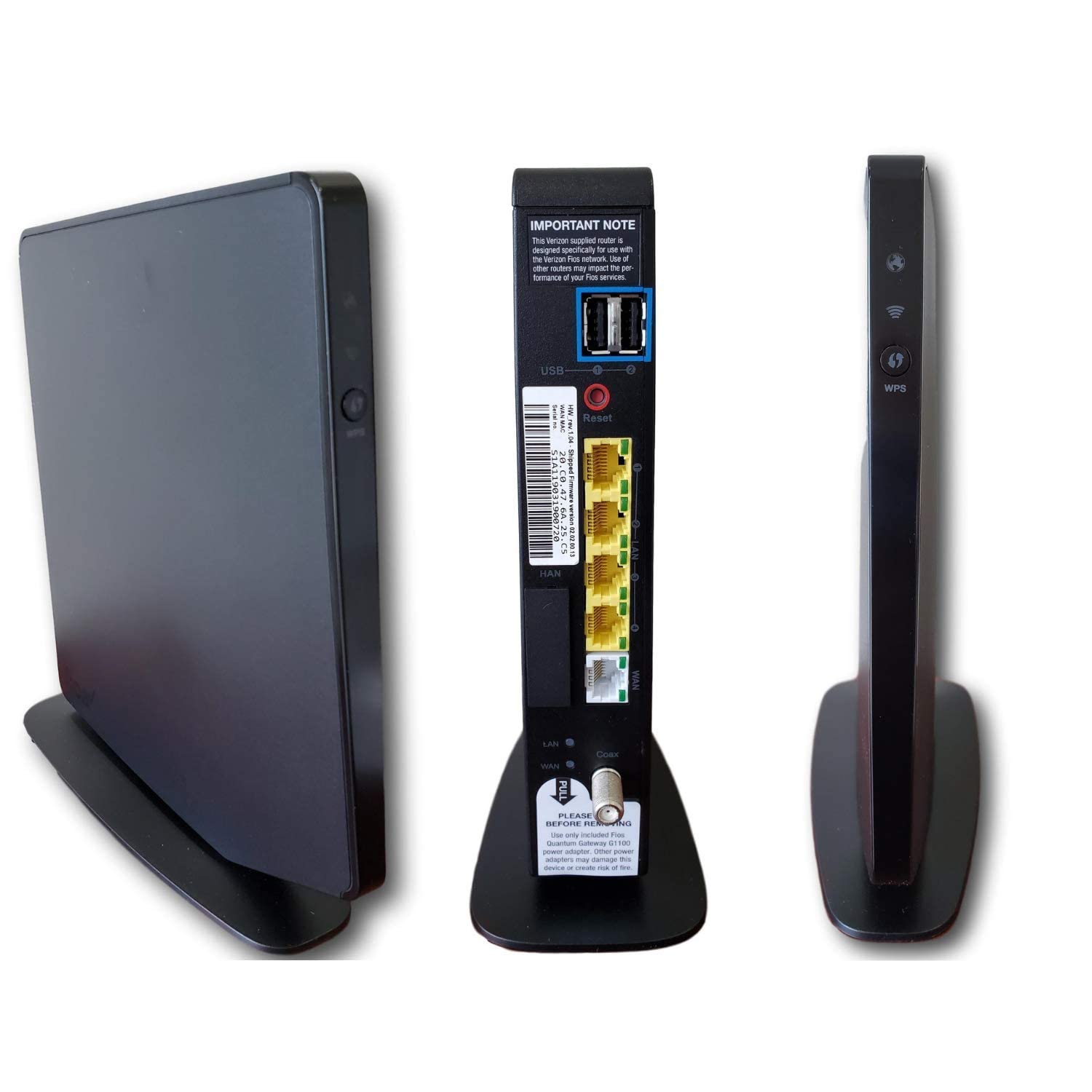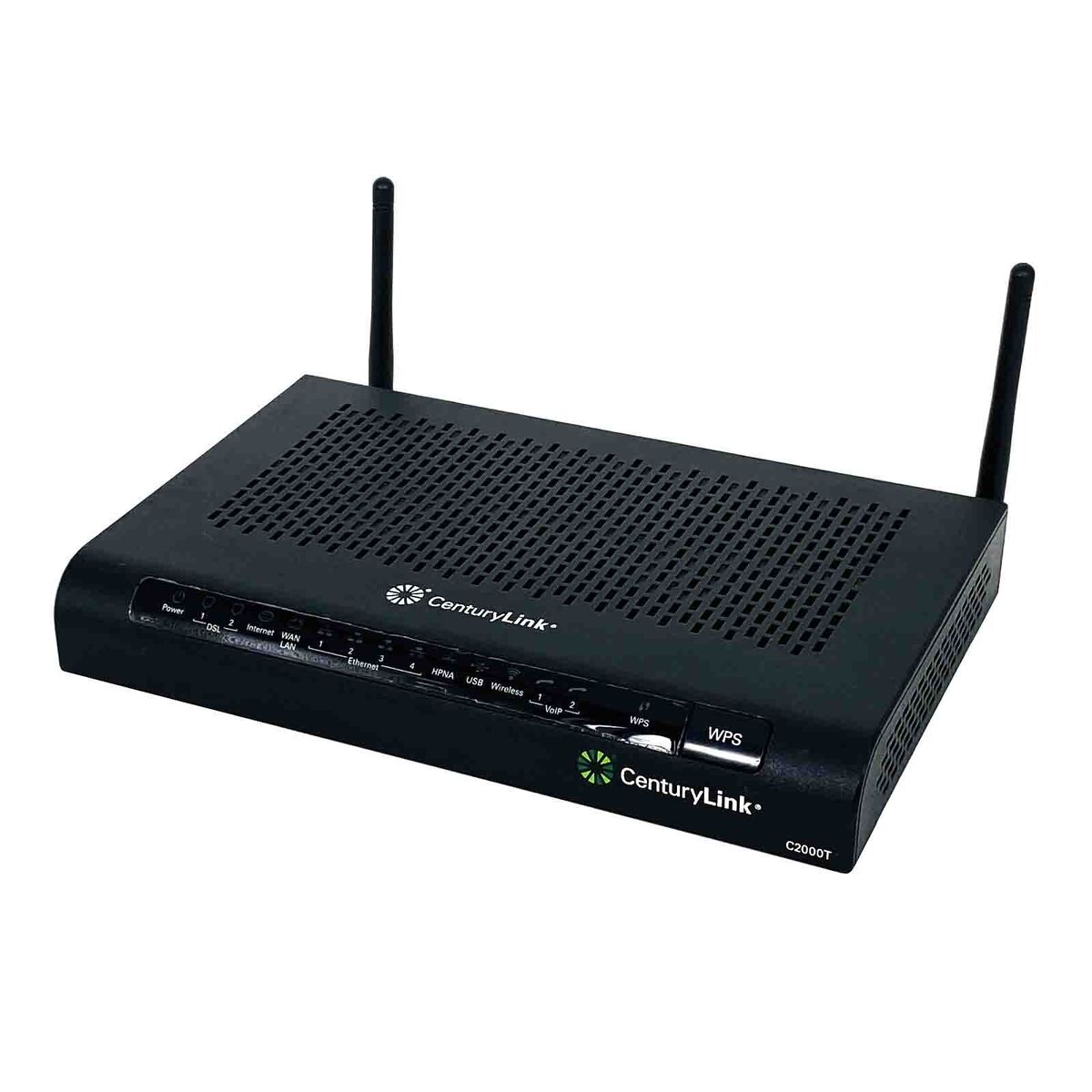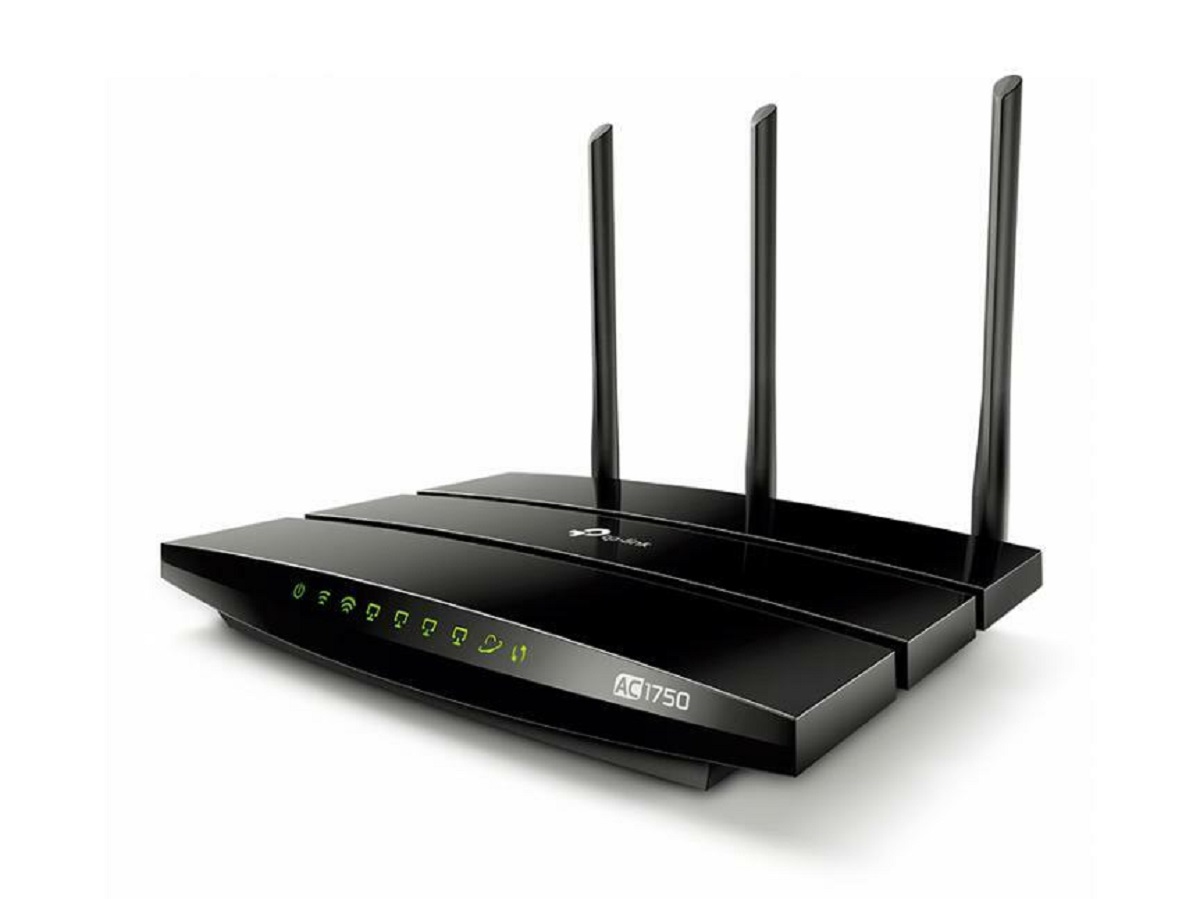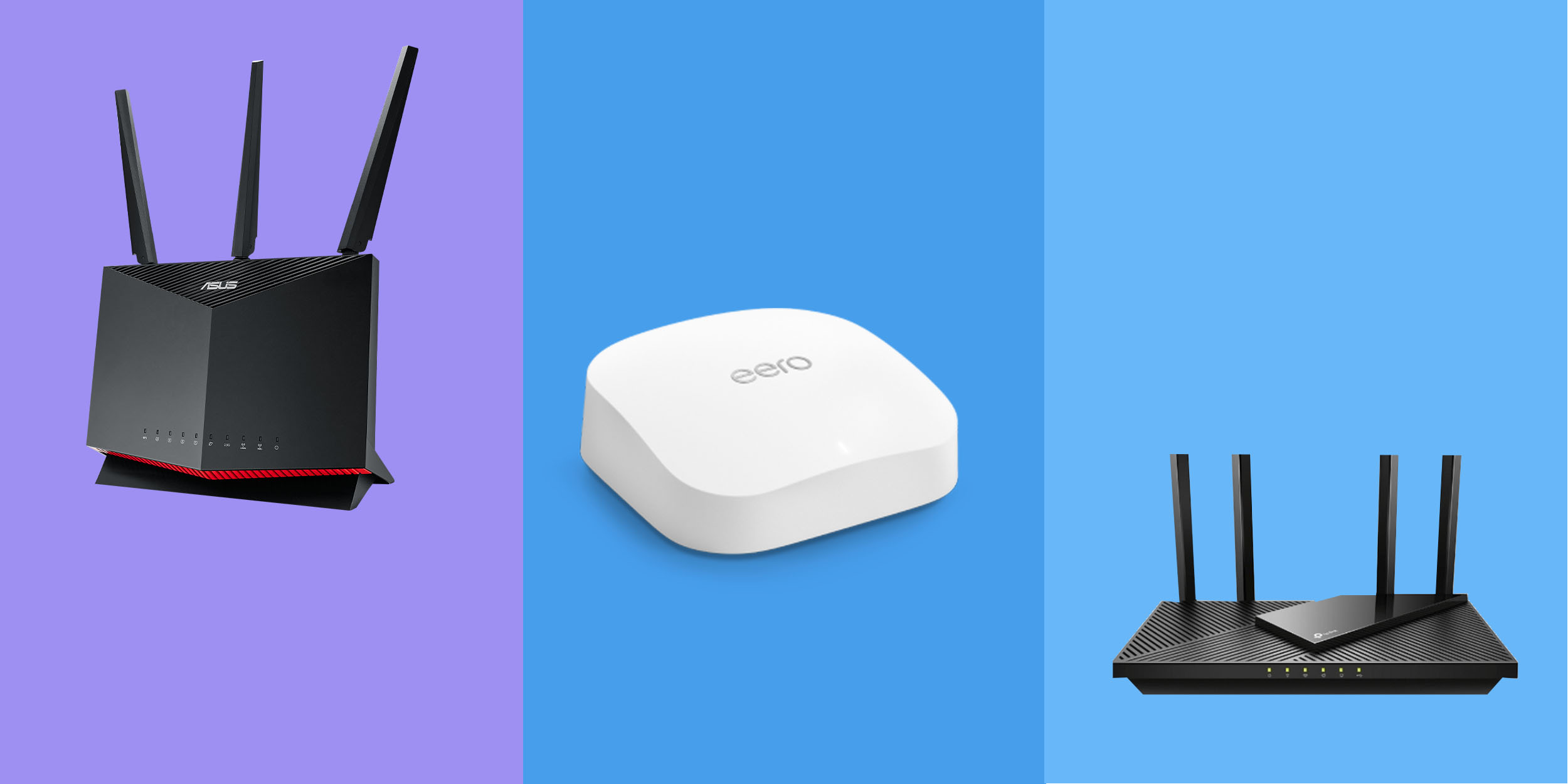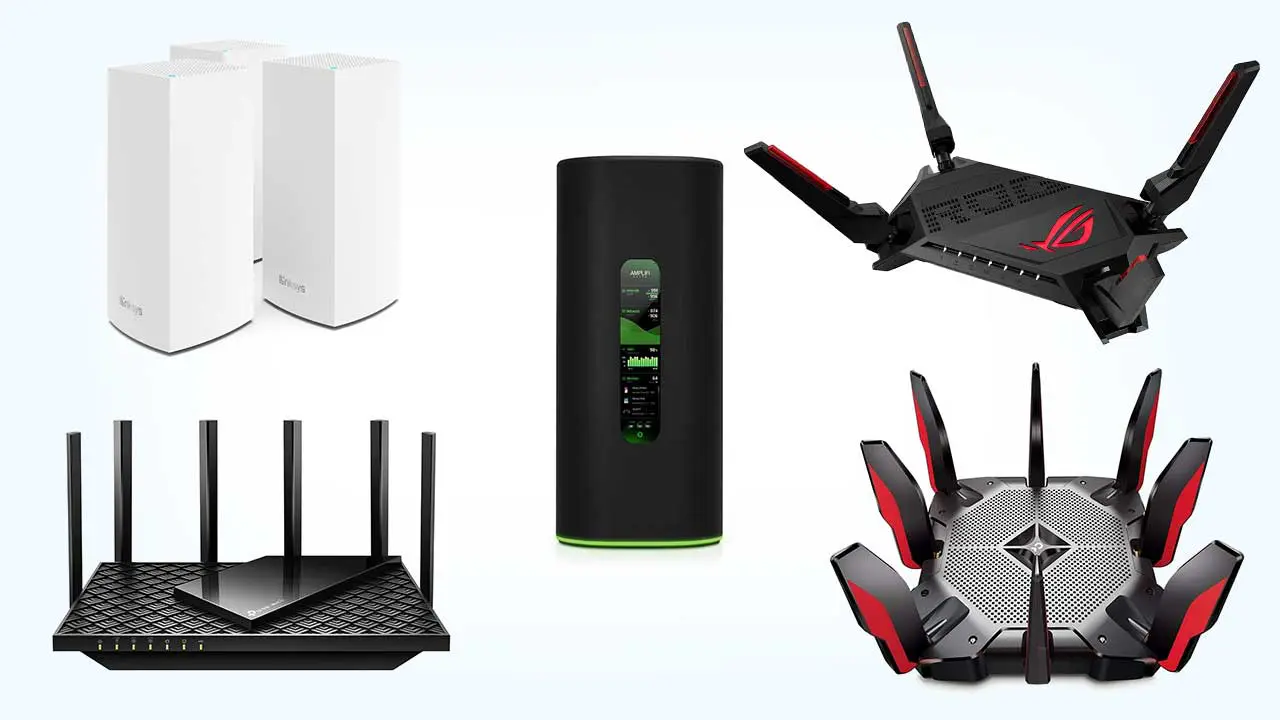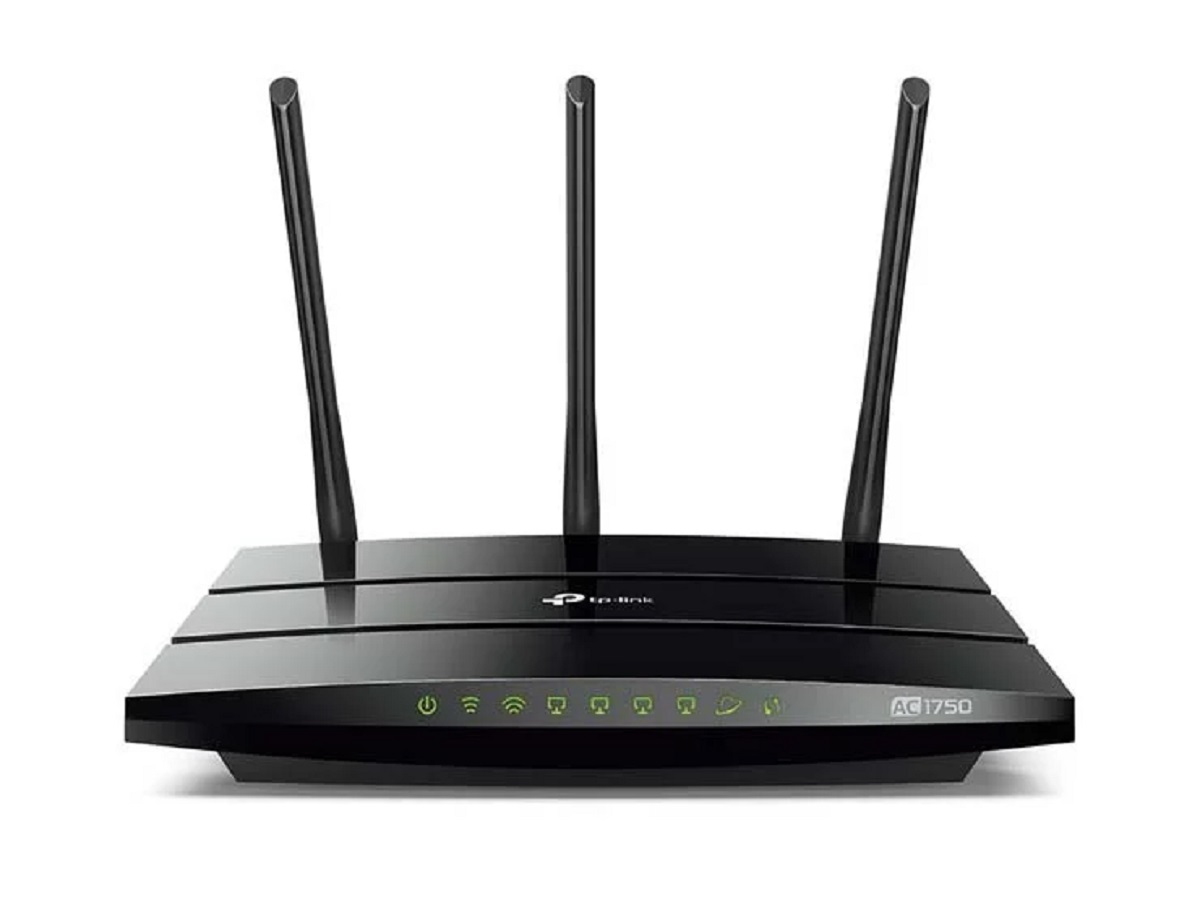Introduction
A wireless router is an essential device that connects multiple devices to the internet or to a local area network (LAN) without the need for wires or cables. It acts as a central hub that enables devices such as smartphones, laptops, tablets, and smart home devices to access the internet and communicate with each other seamlessly. In this article, we will explore the functions and capabilities of a wireless router to understand its importance in today’s connected world.
With the advancement of technology and the increasing reliance on the internet for various tasks, having a reliable and efficient wireless router is crucial. Whether it’s for streaming movies and TV shows, online gaming, downloading large files, or simply browsing the web, a wireless router plays a vital role in ensuring a smooth and uninterrupted connection.
Wireless routers have evolved over the years to provide not only fast and reliable internet connectivity but also a range of additional features that enhance the overall user experience. From providing secure connections to managing network traffic, a wireless router offers a wide range of functionalities that are worth exploring.
In this article, we will delve into the various functions and capabilities of a wireless router, highlighting its importance and how it simplifies our lives in a wireless world. So, let’s dive in and discover what a wireless router can do for you.
What is a Wireless Router?
A wireless router is a networking device that combines the functions of a traditional router with wireless access points. It serves as the central connection point for devices in a network, allowing them to communicate with each other and access the internet wirelessly. While a traditional router manages the flow of data between devices within a network, a wireless router also enables wireless connectivity, eliminating the need for physical wired connections.
At its core, a wireless router acts as a gateway, connecting devices within a local network to the internet. It uses radio waves to transmit and receive data signals, allowing devices to communicate with each other and access online resources. By creating a wireless network, a router enables multiple users to connect simultaneously, providing flexibility and convenience in accessing the internet from different locations within its range.
A wireless router typically features multiple Ethernet ports for wired connections, allowing devices such as gaming consoles, smart TVs, or desktop computers to connect directly using Ethernet cables. Additionally, it emits Wi-Fi signals that enable wireless devices like smartphones, laptops, and tablets to connect to the network without any physical connection.
With the rise of smart home devices and the Internet of Things (IoT), wireless routers have become an integral part of modern households and businesses. They not only provide internet connectivity but also enable the integration and control of a wide array of smart devices, such as smart speakers, thermostats, security cameras, and even appliances, all within a unified network.
Wireless routers come in various types and models, each with its own unique features and specifications. Some routers support dual-band or tri-band frequencies, allowing for faster and more reliable connections, while others offer advanced security features to protect against potential threats. Choosing the right wireless router depends on the specific needs and requirements of the users or the size of the network it will serve.
In the next section, we will dive deeper into the functions and capabilities of a wireless router to understand how it enables seamless communication and internet access in a wireless environment.
Functions of a Wireless Router
A wireless router offers a wide range of functions and capabilities that go beyond simply providing internet connectivity. These functions enhance the overall network performance, security, and user experience. Let’s explore some of the key functions of a wireless router:
-
Wireless Connectivity
The primary function of a wireless router is to provide wireless connectivity to devices within its range. It creates a wireless network by emitting Wi-Fi signals, allowing devices to connect without the need for physical cables. This enables users to access the internet and share data wirelessly across multiple devices within the network.
-
Routing and Forwarding
A wireless router acts as a central hub that routes and forwards data packets between devices within a network and the internet. It uses routing protocols to determine the most efficient path for data transmission, ensuring that data reaches its intended destination quickly and reliably.
-
Network Address Translation (NAT)
NAT is a function that allows multiple devices within a network to share a single public IP address. The wireless router assigns private IP addresses to devices on the local network and translates them to the public IP address when communicating with the internet. This helps conserve public IP addresses and provides an added layer of security by hiding the internal network structure.
-
Firewall Protection
Most wireless routers come with built-in firewall capabilities to protect the network from unauthorized access and potential threats. The firewall monitors incoming and outgoing network traffic, blocking potentially harmful data packets and ensuring a secure network environment.
-
DHCP Server
A wireless router often acts as a DHCP (Dynamic Host Configuration Protocol) server, automatically assigning IP addresses to devices within the network. This simplifies network management and eliminates the need for manual IP configuration, making it easier for users to connect their devices to the network.
-
Quality of Service (QoS)
QoS is a critical function for managing network traffic and prioritizing specific types of data. A wireless router with QoS capabilities can prioritize bandwidth for certain applications or devices, ensuring smooth performance for tasks such as streaming media or online gaming, even when the network is under heavy load.
-
Virtual Private Network (VPN) Support
Some wireless routers offer VPN support, allowing users to create secure connections to remote networks or access their home network from outside locations. VPN support adds an extra layer of privacy and security to internet connections, making it ideal for individuals who value online anonymity and secure data transmission.
-
USB Sharing
Modern wireless routers often have USB ports that can be used for sharing and accessing files or devices over the network. Users can connect USB storage devices, such as external hard drives or thumb drives, to the router and easily share files or stream media to connected devices.
-
Parental Controls
Many wireless routers include parental control features that allow parents or network administrators to restrict access to certain websites or set time limits for internet usage. This enables users to create a safer internet environment for children and control internet access in households or educational institutions.
-
Guest Network
A guest network function allows the creation of a separate network for guests or temporary users. This network isolates guest devices from the main network, providing an extra layer of security and privacy for the main network while still allowing guests to have internet access.
These are just some of the essential functions offered by wireless routers. The availability and range of features may vary depending on the model and manufacturer. By understanding these functions, users can maximize the capabilities of their wireless routers, ensuring optimal network performance and security.
Wireless Connectivity
One of the primary functions of a wireless router is to provide wireless connectivity to devices within its range. It creates a wireless network by emitting Wi-Fi signals, allowing devices to connect without the need for physical cables. This wireless connectivity offers numerous benefits and convenience for users.
With wireless connectivity, users can access the internet from various devices, such as smartphones, tablets, laptops, and smart home devices, without being tethered to a specific location. This freedom of movement allows users to work, browse the web, or stream media from any part of their home or office that is within the router’s range.
Wireless connectivity also enables seamless communication between devices within the network. Users can easily share files, send messages, or collaborate on projects without the need for physical connections or transferring files through external storage devices. This fosters productivity and enhances collaboration in both personal and professional settings.
In addition, wireless connectivity eliminates the need for cumbersome and tangled wires that can limit the placement and arrangement of devices. Users can position devices anywhere within the reach of the wireless signal, promoting a cleaner and more organized workspace.
Furthermore, wireless connectivity allows for easy expansion of the network. Additional devices can be connected to the network without the need for complex wiring installations or disruptions. This flexibility is particularly beneficial in environments where the number of devices may vary or where frequent device additions or replacements occur, such as in offices or shared living spaces.
However, it is essential to note that the range of a wireless router may be limited, especially in larger spaces or areas with physical obstructions. Users may experience weaker signals or slower speeds as they move farther away from the router. In such cases, using wireless range extenders or additional access points can help expand the coverage area and improve the wireless connectivity in those areas.
Overall, wireless connectivity provided by a wireless router offers convenience, flexibility, and mobility for users. It enables seamless internet access, file sharing, and communication between devices without the constraints of physical cables, empowering users to stay connected and productive in a wireless environment.
Routing and Forwarding
Another crucial function of a wireless router is routing and forwarding data packets between devices within a network and the internet. This function ensures that data reaches its intended destination efficiently and accurately.
When a device connected to the wireless router sends data, the router analyzes the destination IP address of the data packet and determines the most efficient path for forwarding it. This process, known as routing, ensures that data is transmitted through the appropriate network paths to reach its intended recipient.
The wireless router acts as a central hub, managing the flow of data between devices within the local network and external networks. By effectively routing data, the router optimizes network performance and minimizes delays or congestion.
Routing also allows for the creation of multiple subnetworks or VLANs (Virtual Local Area Networks) within a larger network. This segmentation helps organize and manage network traffic, making it easier to control access rights, network policies, and bandwidth allocation for different groups of devices or users.
In addition to routing, a wireless router also performs forwarding functions. Forwarding involves transmitting the data packet from the source device to its intended destination based on the routing decisions made by the router. The router acts as an intermediary, receiving data packets from one device and sending them to another device on the network or the internet.
Forwarding is especially critical for internet browsing or accessing online resources. When a user requests a webpage, the wireless router forwards the request to the appropriate web server and then forwards the received webpage data back to the user’s device. This seamless forwarding process enables quick and efficient data transmission, ultimately enhancing the user experience.
It’s important to note that the efficiency of routing and forwarding depends on the quality and performance of the wireless router. Higher-end routers with advanced routing algorithms and faster processors can handle larger amounts of data and make routing decisions more quickly and accurately.
Overall, the routing and forwarding functions of a wireless router play a vital role in ensuring the efficient transmission of data within a network. By accurately routing data packets and seamlessly forwarding them to their intended destinations, the router optimizes network performance, reduces congestion, and enhances the overall user experience.
Network Address Translation (NAT)
Network Address Translation (NAT) is a critical function performed by a wireless router that allows multiple devices within a network to share a single public IP address.
When devices connect to the internet, they require a unique IP address to identify and communicate with other devices. However, the number of available public IP addresses is limited. Without NAT, each device within a network would require a unique public IP address, leading to the depletion of IP addresses and making it unsustainable for large-scale deployments.
To overcome this limitation, wireless routers implement NAT by assigning private IP addresses to devices within the local network. These private IP addresses are typically from one of the private IP address ranges (such as 192.168.x.x or 10.x.x.x) that are reserved for internal use.
When a device within the network wants to communicate with the internet, the wireless router changes the source IP address of the data packets from the private IP address to the public IP address of the router. This process is known as IP address translation.
When responses from the internet are received at the wireless router, it performs reverse IP address translation, changing the destination IP address back from the public IP address to the appropriate private IP address of the requesting device. This ensures that the response is correctly routed back to the intended device within the network.
Network Address Translation provides several benefits:
- Conservation of Public IP Addresses: By using private IP addresses within the local network, NAT helps conserve public IP addresses, which are limited in availability. This is particularly important considering the increasing number of devices and the growth of the Internet of Things (IoT).
- Enhanced Security: NAT provides an added layer of security by hiding the internal structure and addresses of the devices within the network. Devices behind a NAT router are not directly accessible from the internet, reducing the exposure to potential threats and unauthorized access.
- Network Flexibility: NAT allows organizations or households to use private IP addresses for their internal networks independently of their internet service provider. This flexibility simplifies network deployments and provides a level of autonomy when it comes to network configuration and management.
Network Address Translation is a fundamental function of a wireless router that facilitates the efficient use of IP addresses, enhances security, and provides flexibility in network deployments. It plays a crucial role in managing the flow of data between devices within a local network and the internet.
Firewall Protection
One of the essential functions of a wireless router is to provide firewall protection for the network. A firewall acts as a barrier between the local network and the internet, monitoring and controlling incoming and outgoing network traffic based on predefined security rules.
The firewall protection offered by a wireless router helps safeguard the network from unauthorized access, malicious activities, and potential threats. Here are some key aspects of firewall protection:
- Access Control: A firewall allows network administrators to define access control policies, determining which devices or applications are allowed to communicate with the network and which should be blocked. By restricting unauthorized access, the firewall helps prevent intrusions and protects sensitive data.
- Intrusion Detection and Prevention: Modern wireless routers often come with intrusion detection and prevention systems (IDPS) integrated into their firewall capabilities. These systems monitor network traffic and identify potential security threats or suspicious activities. If detected, the firewall can take proactive measures to block or mitigate the threat, bolstering network security.
- Content Filtering: Many wireless routers offer content filtering options as part of their firewall protection. Content filtering allows administrators to block or restrict access to specific websites, services, or types of content based on predefined categories or custom rules. This feature is particularly useful in home environments or educational institutions to control internet access and ensure a safer online experience.
- Denial-of-Service (DoS) Protection: DoS attacks can overwhelm a network by flooding it with an excessive amount of traffic, rendering it inaccessible. Wireless routers equipped with firewall protection can detect and prevent DoS attacks by monitoring network traffic patterns and blocking suspicious or excessive traffic from reaching the network. This helps maintain network availability and ensures uninterrupted connectivity.
- Virtual Private Network (VPN) Passthrough: A firewall in a wireless router may include VPN passthrough capabilities, allowing users to establish secure remote connections to a private network. The firewall ensures that VPN traffic is securely transmitted between the remote device and the private network, providing an extra layer of protection when accessing sensitive resources remotely.
Firewall protection is crucial in maintaining the security and integrity of a network. It helps prevent unauthorized access, protect against external threats, and ensure the privacy of sensitive data. Wireless routers with robust firewall capabilities provide users with peace of mind, knowing that their network is actively protected against potential security breaches.
DHCP Server
A wireless router often functions as a DHCP (Dynamic Host Configuration Protocol) server, automatically assigning IP addresses to devices connected to the network. The DHCP server helps simplify network management and facilitates the smooth and seamless connection of devices.
Traditionally, IP addresses had to be manually assigned to each individual device in a network, which could be a time-consuming and error-prone process. With DHCP, the wireless router automatically assigns unique IP addresses to devices as they connect to the network, eliminating the need for manual configuration.
Here’s how the DHCP server works:
- IP Address Allocation: When a device connects to the network, it sends a DHCP request to the wireless router, requesting an IP address. The DHCP server then allocates an available IP address from a pool of addresses configured by the network administrator. This dynamic allocation ensures that devices receive unique IP addresses and helps conserve IP address resources.
- Address Lease: When a device receives an IP address from the DHCP server, it is typically leased for a predetermined period, known as the lease duration. The device can use the assigned IP address for the duration of the lease. After the lease expires, the device may request a lease renewal, or the DHCP server may assign a new IP address to the device.
- Automatic Network Configuration: Along with the IP address, the DHCP server can provide additional network configuration information to devices, such as the subnet mask, default gateway, DNS (Domain Name System) server addresses, and other parameters. This automatic configuration simplifies the network setup process for users, as they do not need to manually configure network settings for each device.
- Centralized IP Management: By acting as the DHCP server, the wireless router centralizes IP address management within the network. The network administrator can manage and monitor IP address assignments from a single point, ensuring efficient utilization of IP address resources and making it easier to track network devices.
The DHCP server function of a wireless router makes it easier for users to connect their devices to the network. Instead of manually configuring IP addresses, users can rely on the DHCP server to automatically assign addresses, simplifying the setup process.
It is important to note that the DHCP server can also be configured with additional options, such as reserved IP addresses or MAC (Media Access Control) address-based IP assignments. These features allow certain devices to always receive the same IP address, ensuring consistency for specific devices that require static IP configurations.
Overall, the DHCP server function of a wireless router streamlines network management, simplifies the connection process for devices, and ensures efficient utilization of IP addresses within the network.
Quality of Service (QoS)
A wireless router equipped with Quality of Service (QoS) capabilities can enhance the performance and efficiency of a network by prioritizing certain types of data traffic. QoS functionality ensures that critical applications and services receive sufficient bandwidth and minimize delays, improving the overall user experience.
Here are the key aspects and benefits of Quality of Service:
- Traffic Prioritization: QoS enables the classification and prioritization of network traffic based on predefined rules or policies. Different types of data, such as streaming media, online gaming, VoIP (Voice over Internet Protocol), or file transfers, can be assigned different priority levels. This ensures that time-sensitive or bandwidth-intensive applications receive sufficient resources, reducing latency and optimizing performance.
- Bandwidth Management: QoS allows for the allocation and management of available bandwidth among different applications and devices. By setting minimum and maximum bandwidth thresholds for various traffic categories, administrators can ensure fair distribution and avoid network congestion caused by excessive data consumption from specific sources.
- Quality Control: QoS facilitates monitoring and control of network performance, ensuring that service level agreements (SLAs) and quality expectations are met. Metrics such as latency, jitter, and packet loss can be monitored and managed to maintain a high quality of service for critical applications or services.
- Improved User Experience: QoS enhances the user experience by minimizing delays, ensuring smooth media streaming, and providing consistent and reliable network performance. This is particularly beneficial for activities such as online gaming, video conferencing, or real-time communication, where even small delays or interruptions can negatively impact the user’s experience.
- Bandwidth Reservations: QoS allows for dedicated bandwidth reservations for specific applications or devices. For example, a wireless router with QoS capabilities can reserve a certain amount of bandwidth for VoIP calls to ensure crystal-clear voice communications, even when other activities on the network consume a significant portion of the available bandwidth.
It’s important to note that the effectiveness of QoS depends on several factors, including the available bandwidth, network congestion, the capabilities of the wireless router, and the devices on the network. Additionally, proper configuration of QoS settings is necessary to fully leverage its benefits and optimize network performance.
Overall, Quality of Service functionality in a wireless router provides a means to prioritize and manage network traffic, improving the performance, reliability, and user experience for critical applications and services.
Virtual Private Network (VPN) Support
A wireless router that offers Virtual Private Network (VPN) support allows users to establish secure connections to remote networks or access their home network from outside locations. VPN support in a wireless router enhances privacy, security, and flexibility for users who require safe and encrypted connections.
Here are the key aspects and benefits of VPN support in a wireless router:
- Secure Remote Access: VPN support allows users to establish secure connections to remote networks over the internet. This is especially useful for individuals who need to access their work network or resources while away from the office. By establishing a VPN connection, users can securely transmit data between their device and the remote network, even when using an untrusted or public network.
- Data Encryption: VPN support in a wireless router ensures that data transmitted between the user’s device and the remote network is encrypted. Encryption protects the data from potential eavesdropping or interception, enhancing privacy and security. It ensures that sensitive information remains confidential, even when transmitted over insecure networks.
- Anonymous Browsing: When connected to a VPN through a wireless router, a user’s browsing activities can be anonymized. The VPN server acts as an intermediary, masking the user’s IP address and routing the internet traffic through its network. This helps protect the user’s online identity and activities from being traced or monitored by third parties.
- Geo-Restriction Bypass: VPN support can assist in bypassing geographic restrictions imposed on certain websites or online services. By connecting to a VPN server located in a different country, users can mask their actual location and access content that would otherwise be unavailable in their region. This enables users to enjoy global access to information and services irrespective of their physical location.
- Flexibility and Convenience: Wireless routers with VPN support provide users with the flexibility to connect to their home network securely from remote locations. Users can access shared files, printers, or other devices within their home network as if they were physically present. This is particularly beneficial for individuals who travel frequently or work remotely, providing seamless network access from anywhere with an internet connection.
It’s important to note that setting up a VPN connection may require additional configuration, such as obtaining VPN client software or configuring the wireless router’s VPN settings. Different wireless routers may support different VPN protocols, so compatibility with the intended VPN service or network should be considered before making a selection.
In summary, VPN support in a wireless router provides users with secure remote access, data encryption, anonymous browsing, bypassing geo-restrictions, and the convenience of accessing their home network from anywhere. It enhances privacy, security, and flexibility in network communication and safeguards sensitive data from unauthorized access or interception.
USB Sharing
A wireless router equipped with USB sharing functionality allows users to connect USB storage devices, such as external hard drives or thumb drives, to the router. This feature enables easy sharing and accessing of files or media over the network, providing convenient and efficient storage solutions.
Here are the key aspects and benefits of USB sharing in a wireless router:
- File Sharing: By connecting a USB storage device to the wireless router, users can easily share files and media with other devices on the network. This eliminates the need for physically transferring files or carrying storage devices between devices. Users can access shared files from any connected device, whether it’s a computer, laptop, smart TV, or mobile device.
- Centralized Storage: USB sharing in a wireless router allows users to centralize their storage space. Instead of storing files on multiple devices, users can store them on a single USB storage device connected to the router. This simplifies file organization, backup, and retrieval, making it easier to manage and access files from any connected device within the network.
- Multi-User Access: USB sharing enables multiple users to access shared files simultaneously. Whether it’s collaborating on a document or streaming media, multiple users can interact with the shared files without conflicts. This promotes efficiency and productivity, particularly in office or home environments where multiple users require access to shared resources.
- Backup and Sync: With a USB storage device connected to the wireless router, users can set up automated backup routines for important files. This ensures data integrity and provides an additional layer of protection against potential data loss. Furthermore, users can synchronize files across devices, keeping them up-to-date and accessible from anywhere within the network.
- Media Streaming: USB sharing in a wireless router allows for media streaming directly from the connected USB storage device. Users can access and play multimedia files, such as music, videos, or photos, on devices capable of receiving media streams. This eliminates the need for copying files to individual devices, saving storage space and simplifying media consumption.
It’s important to note that the capabilities and features of USB sharing may vary depending on the wireless router model and firmware. Some routers offer additional features, such as FTP (File Transfer Protocol) server functionality, remote access, or media server support. Compatibility with different file systems, such as FAT32, exFAT, or NTFS, should also be considered to ensure proper file handling and compatibility with different devices.
Overall, USB sharing in a wireless router provides users with easy file sharing, centralized storage, multi-user access, backup and sync capabilities, and media streaming. It enhances convenience, efficiency, and collaboration by offering a centralized storage solution accessible to all devices within the network.
Parental Controls
Parental controls are a valuable feature offered by some wireless routers, allowing parents or network administrators to manage and control internet access for children or specific users within the network. Parental control functionality enhances online safety and promotes responsible internet usage.
Here are the key aspects and benefits of parental controls in a wireless router:
- Content Filtering: Parental controls enable content filtering, allowing parents or administrators to block access to specific websites, categories of content, or age-inappropriate material. This helps protect children from accessing or being exposed to explicit or harmful content on the internet.
- Time Restrictions: Wireless routers equipped with parental controls can set time restrictions for internet access. Parents can define specific time periods during which internet usage is allowed or restricted. This feature can help enforce healthy screen-time habits, limit late-night internet browsing, and encourage other activities.
- Safe Search: Many wireless routers with parental controls support safe search settings for popular search engines. Enabling safe search filters ensures that search results are filtered for explicit or inappropriate content, providing a safer search experience for children.
- User Monitoring: Parental control features often provide monitoring capabilities, allowing parents or administrators to track and review the internet activity of individual users within the network. This visibility helps parents understand their children’s online habits, identify potential concerns, and initiate conversations about responsible internet usage.
- Device-specific Controls: Some wireless routers with parental controls allow for specific controls to be applied to individual devices. This provides flexibility in customizing internet access and content filtering settings for different users based on their specific needs and requirements.
It is important to note that parental controls should be used in conjunction with open communication and education about safe internet practices. While parental controls can help mitigate risks and enforce restrictions, open dialogue and teaching children about responsible internet usage remain essential for fostering a healthy and safe online environment.
Furthermore, it’s important to periodically review and update the parental control settings to ensure their effectiveness and adjust them as children grow older and their internet needs change. This flexibility allows parents to adapt to evolving circumstances and strike a balance between online safety and gradual independence.
Overall, parental controls in a wireless router provide a range of tools for managing and supervising internet access. By implementing content filtering, time restrictions, safe search settings, user monitoring, and device-specific controls, parental controls promote responsible internet usage and create a safer online environment for children and users within the network.
Guest Network
A guest network is a feature offered by many wireless routers that enables the creation of a separate network specifically for guests or temporary users. The guest network functionality provides numerous benefits, including enhanced security, privacy, and convenience for both the main network users and the guests.
Here are the key aspects and benefits of a guest network in a wireless router:
- Network Isolation: A guest network allows guests to connect to the internet without having access to the main network or its connected devices. This network isolation ensures that guests cannot view or access files, printers, or other resources shared on the main network, providing an additional layer of security and privacy.
- Secure Access Credentials: When setting up a guest network, wireless routers typically provide options for generating temporary or limited-time access credentials. This ensures that guests receive unique login details for accessing the network, preventing unauthorized users from connecting and maintaining control over who can access the network.
- Bandwidth Management: Guest network functionality often includes bandwidth management features, allowing network administrators to assign and limit the amount of bandwidth available for the guest network. This helps prevent guests from consuming excessive bandwidth and impacting the performance of the main network, ensuring fair and consistent network performance for all users.
- Convenient Access for Guests: A dedicated guest network provides a convenient and hassle-free way for guests to connect to the internet during visits to homes or offices. Instead of allowing guests to connect directly to the main network, which may require sharing network credentials, the guest network offers a separate and simplified connection process.
- Enhanced Security for Main Network: By isolating guest devices on a separate network, the main network’s security is enhanced. Potential threats or security breaches on the guest network are isolated and are less likely to affect the main network or compromise sensitive data or devices. Thus, the guest network helps protect the main network from potential vulnerabilities introduced by guest devices.
It is important to note that the security and privacy of the guest network should be ensured by using strong passwords, enabling encryption, and regularly updating the wireless router’s firmware. Additionally, guest network access should be periodically reviewed to remove any unnecessary access credentials and maintain control over who can connect to the network.
Overall, a guest network in a wireless router offers increased security, privacy, and convenience for both the main network users and the guests. By creating a separate network for guest access, wireless routers provide a secure and controlled environment for guests to connect to the internet while protecting the main network and its resources.
Conclusion
Wireless routers play a vital role in our connected world, providing seamless internet connectivity and networking capabilities for a wide range of devices. With their numerous functions and features, wireless routers have become indispensable for both personal and professional settings.
In this article, we explored the functions and capabilities of a wireless router in-depth. From wireless connectivity and routing to network address translation and firewall protection, a wireless router provides essential functionality to ensure efficient and secure network operations. Additionally, features like DHCP server, Quality of Service (QoS), VPN support, USB sharing, parental controls, and guest networks enhance user experience, network management, and overall network security.
By harnessing wireless technology, a wireless router allows devices to connect to the internet and communicate with each other without the constraints of physical cables. This wireless connectivity provides freedom and flexibility for users to access the internet and share data from any part of their home or office.
As technology continues to advance, wireless routers evolve to meet the demands of modern network environments. They offer higher speeds, improved security measures, and additional features to accommodate the ever-growing number of devices and the increasing complexity of network requirements.
Choosing the right wireless router, based on specific needs and requirements, is crucial to ensure optimal network performance and security. It’s important to consider factors such as wireless standards, range and coverage, number of devices supported, security features, and additional functionalities provided by the wireless router.
In summary, wireless routers are essential devices that provide wireless connectivity, routing, security, and a range of advanced features that enhance our network experiences. They have revolutionized the way we connect and communicate, making our lives more convenient, productive, and connected in today’s wireless world.







